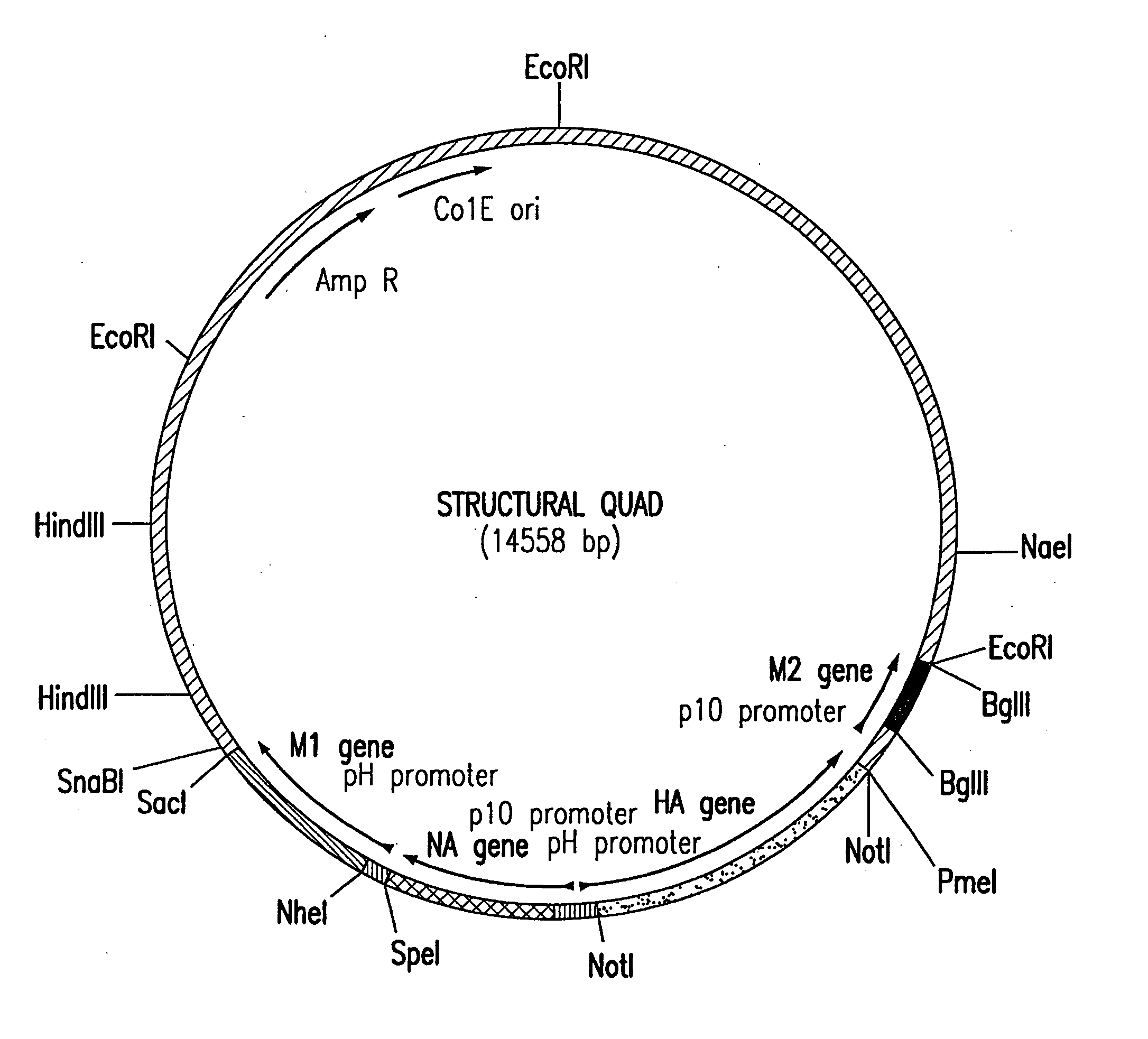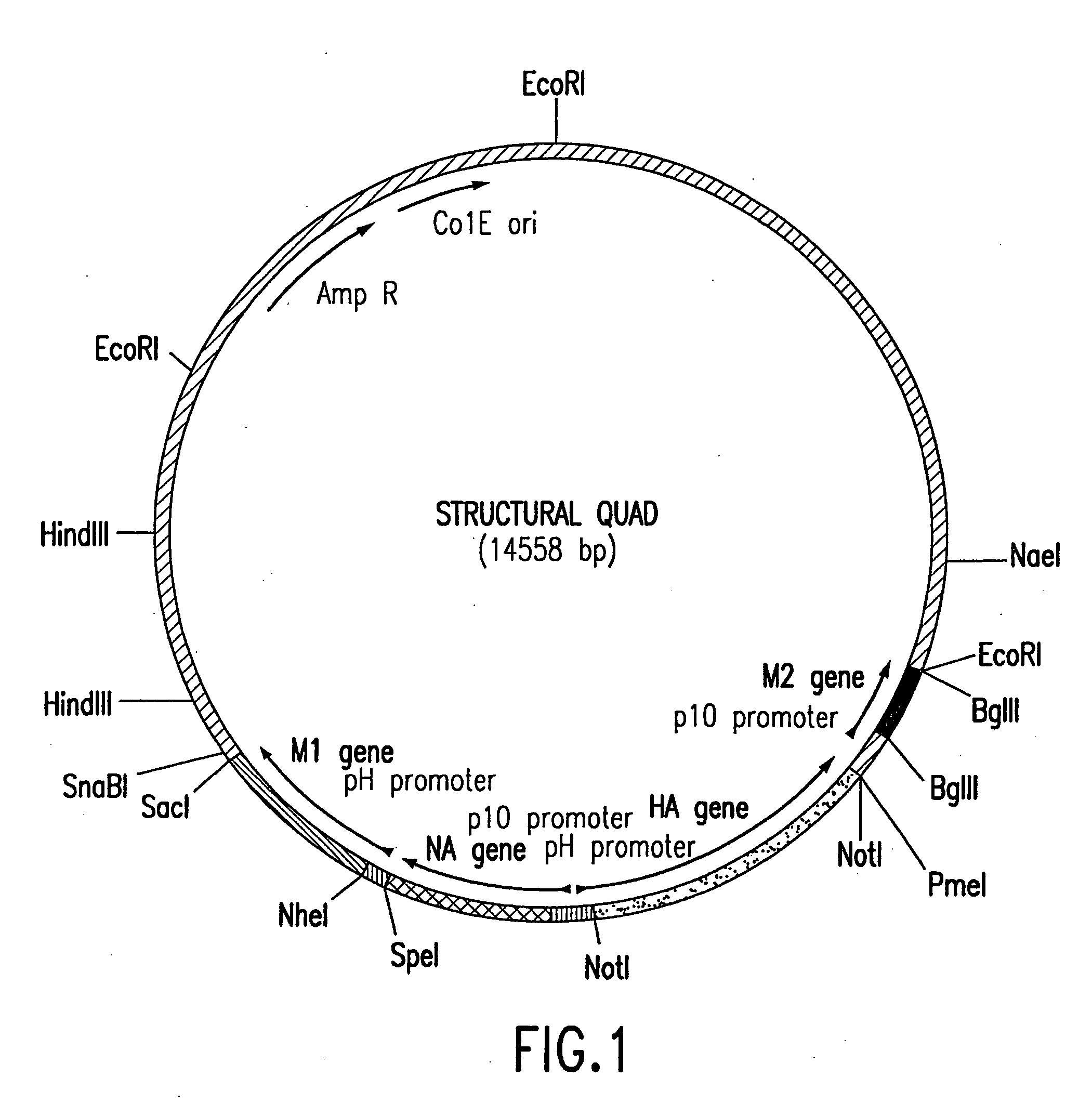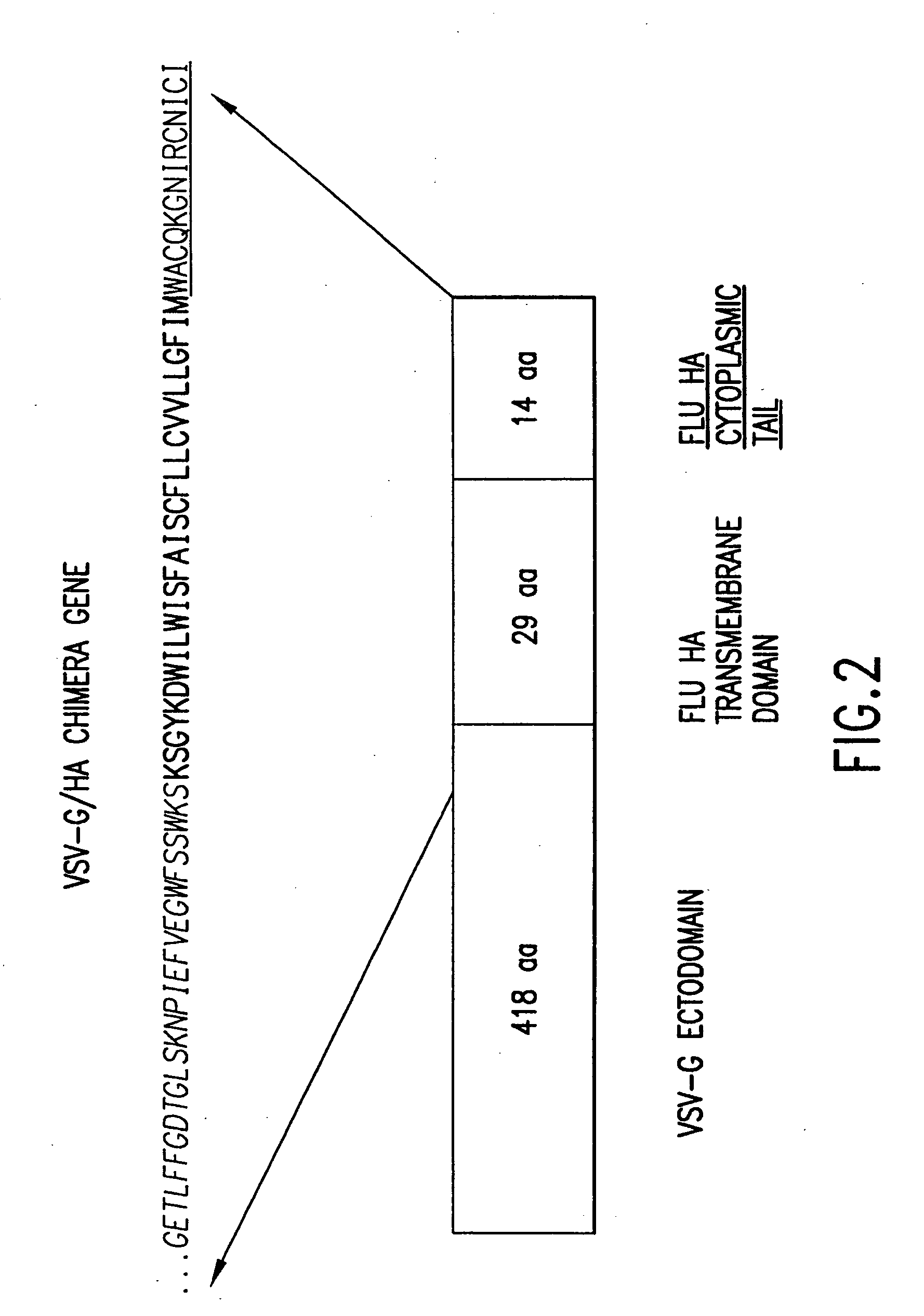Assembly of wild-type and chimeric influenza virus-like particles (VLPs)
a technology of influenza virus and like particles, applied in the field of influenza viruslike particles, can solve the problems of filamentous morphology, complex process, and lack of cellular proteins, and achieve the effect of reducing the number of filamentous morphologies
- Summary
- Abstract
- Description
- Claims
- Application Information
AI Technical Summary
Benefits of technology
Problems solved by technology
Method used
Image
Examples
example 1
Cloning of Influenza M2 Gene into the Baculovirus Transfer Vector pAcAB4
[0117] The influenza M2 gene, which is a spliced product of the M1 mRNA, was isolated by RT-PCR from polyadenylated mRNA extracted from MDCK cells which had been infected with the influenza A / Udorn / 72 (H3N2) strain. The M2 gene was cloned as a DNA insert into a pGemT vector (Promega) and sequenced with specific primers using a dye termination sequencing reaction and an automated ABI 377 DNA sequencer (Applied Biosystems).
[0118] The M2 gene was released from the pGemT-M2 plasmid by digestion with the EagI restriction enzyme and prepared for cloning into the pAcAB4 (PharMingen) baculovirus transfer vector. The M2-DNA fragments were filled in with DNA polymerase (Klenow fragment) and BglII linkers were incorporated into the termini by ligation with T4 DNA ligase. All enzymes and linkers were obtained from New England Biolabs (NEB). Transfer vector pAcAB4 was then digested with BglII and treated with calf intestin...
example 2
Construction of an Intermediate (“Shuttle”) Vector
[0119] Due to limitations in the number of convenient restriction sites to clone influenza genes into the transfer vector pAcAB4, a shuttle cloning vector was generated carrying three baculovirus promoters (two polyhedrin and one p10) flanked by new restriction sites that were added by PCR. This shuttle vector was constructed as follows: pAcAB4M2. (from Example 1) was digested with SmaI and divided into two samples. One pAcAB4 / M2-SmaI sample was digested with XbaI, which released a 400 nucleotide long DNA fragment. This DNA was gel purified and amplified by PCR with two primers, one of which incorporated into one end of the final product the PmeI (italics) and NotI (underlined) sites:
(SEQ ID NO:4)5′ GTTTAAACGCGGCCGCCGTATTTATAGGTTTTTTTATTA 3′(SEQ ID NO:5)5′ TTTTATTACTAGTCCCGGGGATCTGTGATTGTAAAT 3′
[0120] The other pAcAB4 / M2-SmaI sample was digested with BamHI, and the released SmaI / BamHI DNA fragment was gel purified and also amplifi...
example 3
Cloning of Influenza HA, MA and M1 Genes into the Shuttle Vector
[0123] The influenza genes HA, NA, and matrix (M1) were recovered by RT-PCR from purified genomic RNA of influenza virus A / Udorn / 72 (H3N2). All three genes were cloned as DNA inserts into pGemT or pGemTeasy vectors (Promega) and sequenced with specific primers using a: dye termination sequencing reaction and an automated ABI 377 DNA sequencer. The two donor splice sites at the 5′ end of the M1 gene were mutated using a QuikChange Kit from Stratagene (pGT-M1 splice) to prevent the potential splicing of the M1 mRNA in host cells.
[0124] These three genes were cloned into the shuttle vector in three steps:
[0126] The pGemT / M1 (splice) plasmid (pGemT carrying the M1 gene) was used as the template in a PCR reaction with 5′ and 3′ primers that introduced an NheI and an SacI site, respectively, in the amplified DNA. This PCR DNA was then digested with NheI / SacI and gel purified. Similarly, the pN...
PUM
| Property | Measurement | Unit |
|---|---|---|
| Composition | aaaaa | aaaaa |
| Immunogenicity | aaaaa | aaaaa |
| Ectodomain | aaaaa | aaaaa |
Abstract
Description
Claims
Application Information
 Login to View More
Login to View More - R&D
- Intellectual Property
- Life Sciences
- Materials
- Tech Scout
- Unparalleled Data Quality
- Higher Quality Content
- 60% Fewer Hallucinations
Browse by: Latest US Patents, China's latest patents, Technical Efficacy Thesaurus, Application Domain, Technology Topic, Popular Technical Reports.
© 2025 PatSnap. All rights reserved.Legal|Privacy policy|Modern Slavery Act Transparency Statement|Sitemap|About US| Contact US: help@patsnap.com



